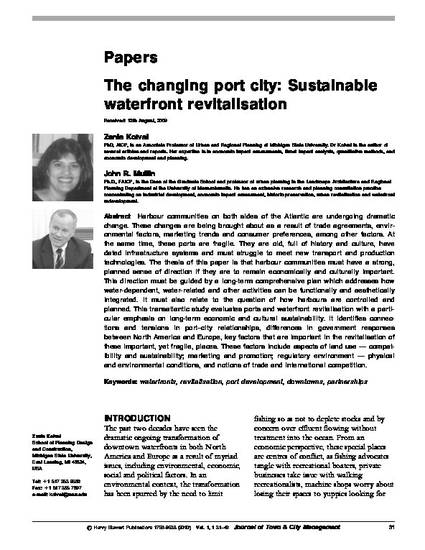
Article
The Changing Port City: Sustainable Waterfront Revitalisation
Journal of Town & City Management
(2010)
Abstract
Harbour communities on both sides of the Atlantic are undergoing dramatic
change. These changes are being brought about as a result of trade agreements, environmental
factors, marketing trends and consumer preferences, among other factors. At
the same time, these ports are fragile. They are old, full of history and culture, have
dated infrastructure systems and must struggle to meet new transport and production
technologies. The thesis of this paper is that harbour communities must have a strong,
planned sense of direction if they are to remain economically and culturally important.
This direction must be guided by a long-term comprehensive plan which addresses how
water-dependent, water-related and other activities can be functionally and aesthetically
integrated. It must also relate to the question of how harbours are controlled and
planned. This transatlantic study evaluates ports and waterfront revitalisation with a particular
emphasis on long-term economic and cultural sustainability. It identifies connections
and tensions in port–city relationships, differences in government responses
between North America and Europe, key factors that are important in the revitalisation of
these important, yet fragile, places. These factors include aspects of land use — compatibility
and sustainability; marketing and promotion; regulatory environment — physical
and environmental conditions, and notions of trade and international competition.
Keywords
- waterfronts,
- revitalisation,
- port development,
- downtowns,
- partnerships
Disciplines
Publication Date
2010
Publisher Statement
Permission granted by Daryn Moody, Publisher of Journal of Town & City Management, Henry Stewart Publications with no restrictions.
Citation Information
Zenia Kotval and John Mullin. "The Changing Port City: Sustainable Waterfront Revitalisation" Journal of Town & City Management (2010) p. 31 - 46 Available at: http://works.bepress.com/john_mullin/76/
